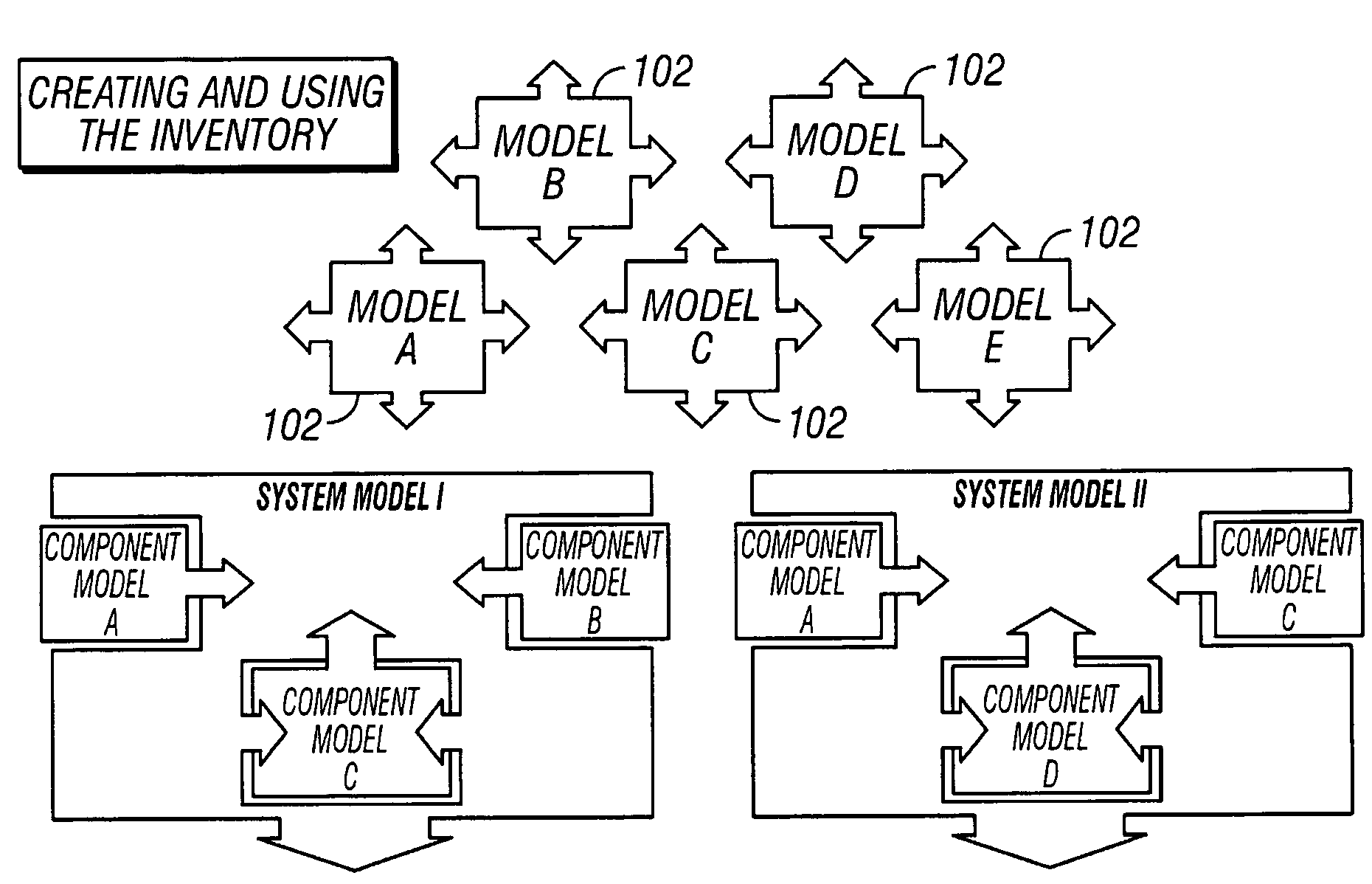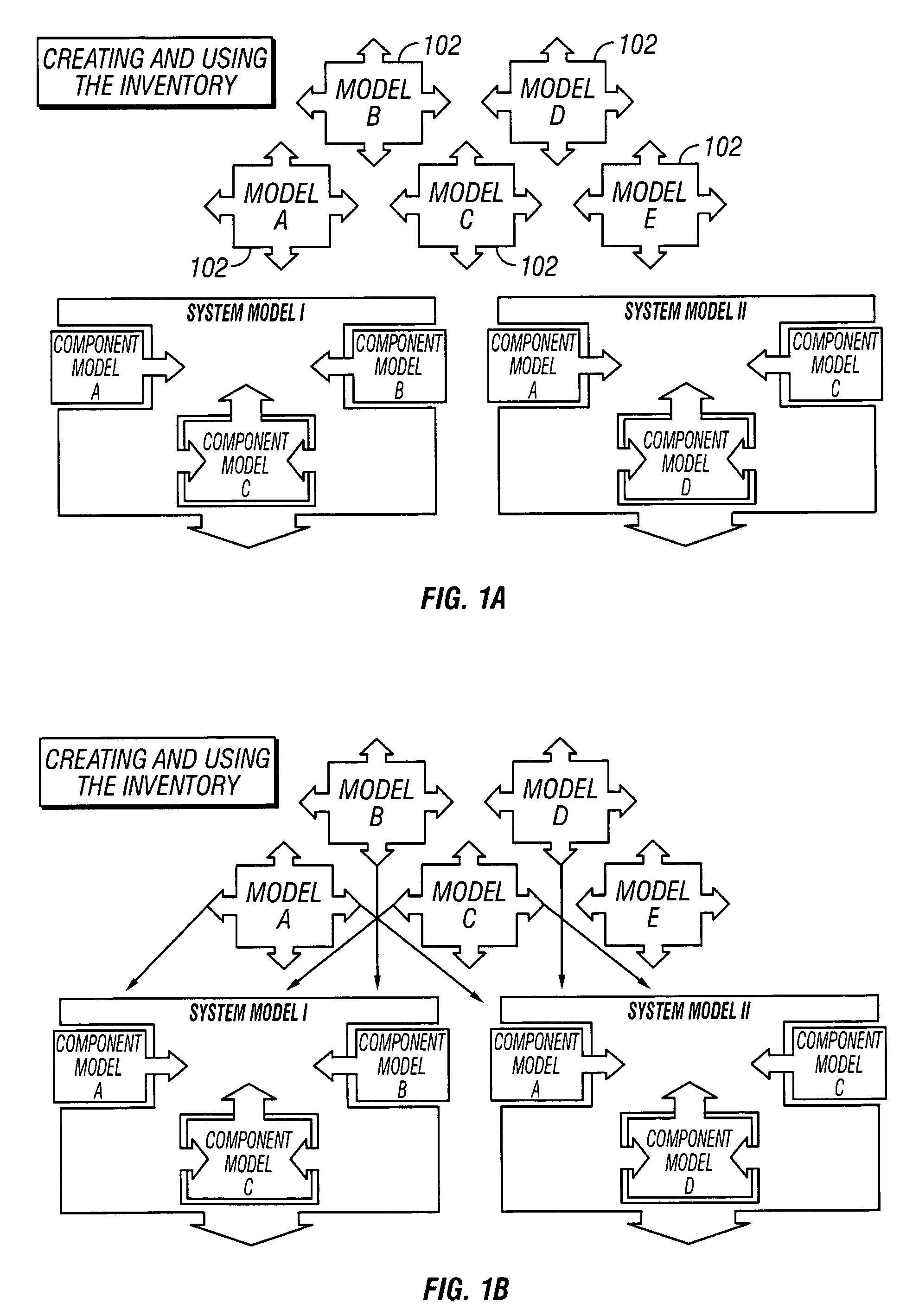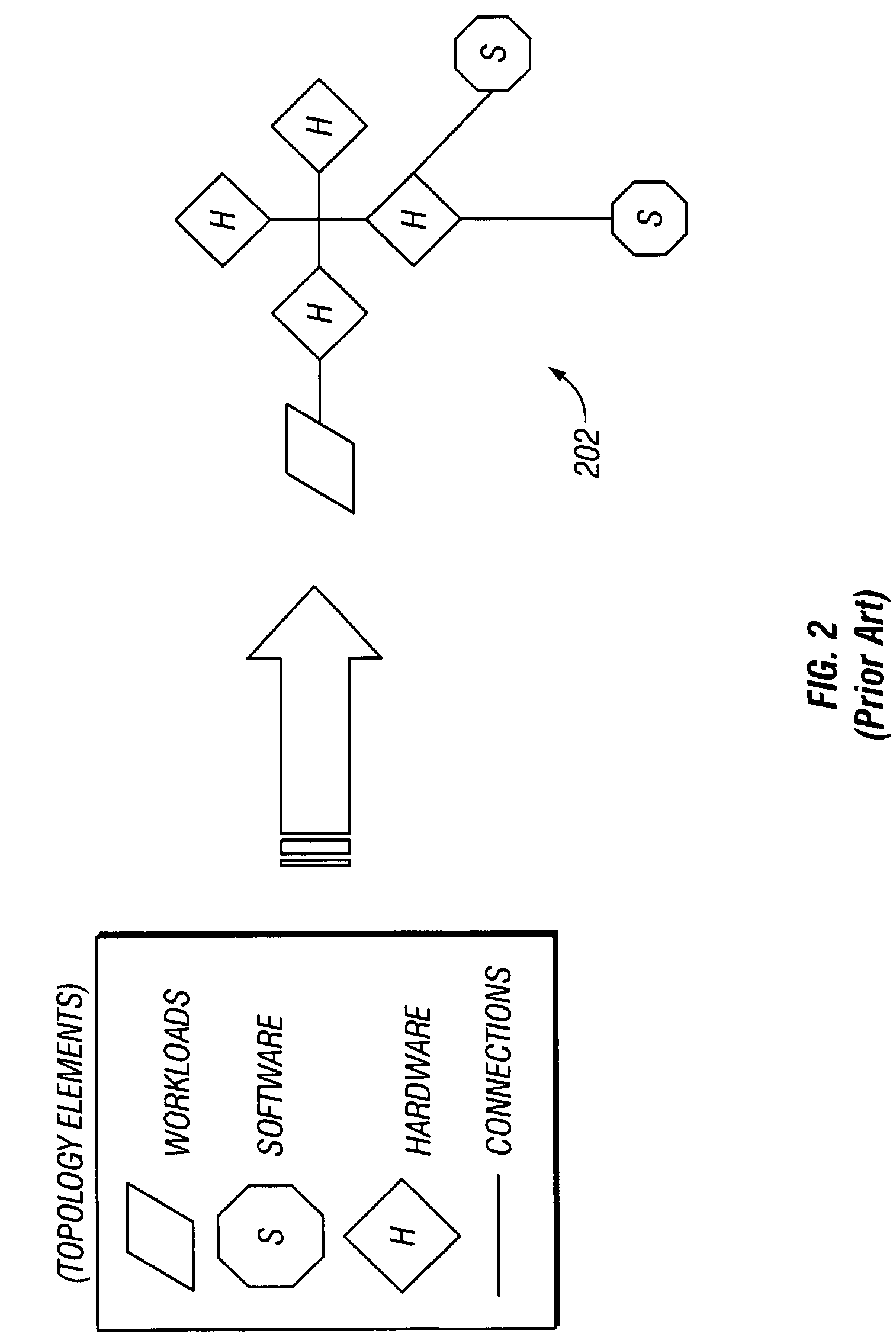Common component modeling
a component modeling and component technology, applied in the field of computerized discrete event simulation techniques, can solve the problems of limiting the usefulness of a simulation model for short-term operational adjustments, difficult to change the resource intensive nature of developing a new model, and time-consuming current process and function to define, develop and utilize simulation modeling for capacity planning, etc., to facilitate reuse and recombination, and reduce the effect of ongoing costs
- Summary
- Abstract
- Description
- Claims
- Application Information
AI Technical Summary
Benefits of technology
Problems solved by technology
Method used
Image
Examples
Embodiment Construction
[0027]A method and apparatus for generating predictive capacity and performance information to be used in Information Technology (IT) planning processes, by employing a modeling process that reduces the ongoing costs of developing, maintaining, and applying discrete event simulation techniques is provided. To achieve this, what is currently a custom process for developing individual discrete performance models is transformed into a continuous process for providing on-going performance information. The core concept is to develop simulation models by creating other simulation models as components which can then be retained and reused in combination with one another to answer future performance questions. This process requires devising standard component model constructs that facilitate their reuse and recombination, tools to combine component models into composite models, processes for the development of new composite models from components, and a stable, flexible repository for retai...
PUM
 Login to View More
Login to View More Abstract
Description
Claims
Application Information
 Login to View More
Login to View More - R&D
- Intellectual Property
- Life Sciences
- Materials
- Tech Scout
- Unparalleled Data Quality
- Higher Quality Content
- 60% Fewer Hallucinations
Browse by: Latest US Patents, China's latest patents, Technical Efficacy Thesaurus, Application Domain, Technology Topic, Popular Technical Reports.
© 2025 PatSnap. All rights reserved.Legal|Privacy policy|Modern Slavery Act Transparency Statement|Sitemap|About US| Contact US: help@patsnap.com



